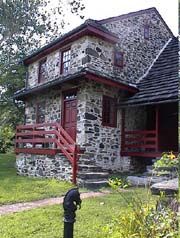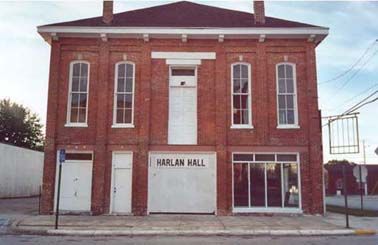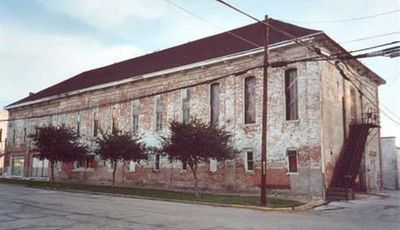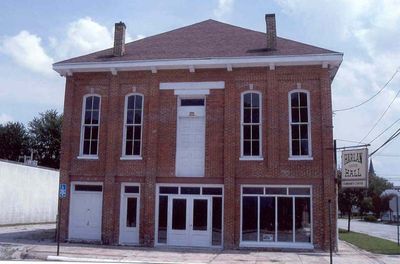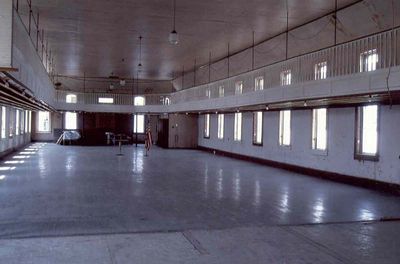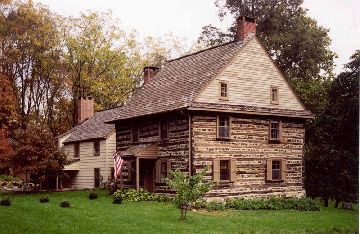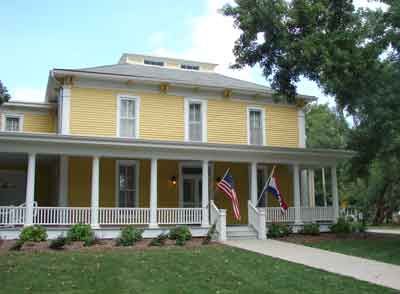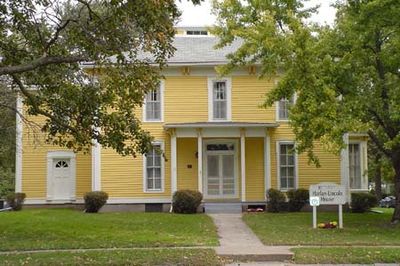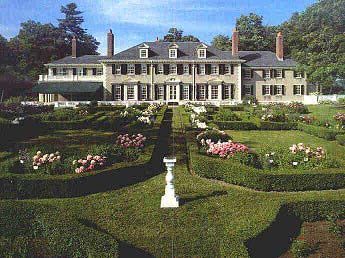Barton House, Texas
Centerpiece of the National Ranching Heritage Center, Lubbock, Texas
View the Barton House at this link: http://www.bartonsite.org/bartonsite.htm
National Ranching Heritage Center link: http://www.depts.ttu.edu/ranchhc/home.htm
The year after his birth in Kennet Township, Chester County, Pa., around 1752, Aaron Harlan (#194) moved with his parents (Aaron Harlan and Sarah Hollingsworth) to Chatham County, N.C. He married Elizabeth Stuart and around 1781, the family settled on a farm in Laurens District, S,C., where Aaron and Elizabeth are buried.
Joseph, son of Aaron (#194) and Sarah, and his family emigrated to Robertson County, Texas, in 1837, shortly after Texas gained independence from Mexico. Son Alpheus was a 7-year-old when the family moved to the wilds of Texas.
Alpheus married Margaret Powell, and their third child, Mary Jane, was born in 1866 to a then successful planter. She lived a pretty sheltered life in reasonably civilized Robertson County before being wooed by Joseph James Barton. Many love letters written by J. J. Barton to Mary Jane still exist.
About five years after they married, J. J. took his wife on to the High Plains of Texas—the "Staked Plains" —or Llano Estacado, as they were called by the Conquistadors. It was a very barren, "godforsaken" place and had been controlled by the Comanches a few years earlier. After a number of years of very primitive living, they became successful and built a town and large house. Later they lost the town and most everything else when the railroad didn't come through, and two blizzards killed most of their cattle. Eventually only the big house was left, which became my grandparents' home, and I played there as a child. My grandmother Mary Jane donated it to the National Ranching Heritage Center in Lubbock, Texas, at her death, and it was moved 40 miles to its current resting place.
My ancestors were all willing to move to the frontier in hopes of more and better land. They were adventurous, self-confident and deeply religious, mostly Baptist and Methodist, with a few preachers tossed in here & there. (J. J. Barton's maternal grandfather was a Methodist Circuit Rider in early Texas.) They were all farmers or planters, and all had big families.
Mary Jane was Baptist, and Joe was Methodist. They struggled with this difference their whole marriage and apparently never reached agreement. The couple lost four of eight children, two when small and two as adults. One daughter was college age and in an attempt to save her health, the whole family moved to a different climate, but it didn't help. Their first born died in WW I a week before the Armistice.
--Submitted by Terry Barton (descended from William—James—George (#3)—Aaron on (#8)—Aaron(#41)—Aaron(#194)—Joseph (#711)—Alpheus(#2390)—Mary Jane (#6129), who married Joseph James James Barton.
